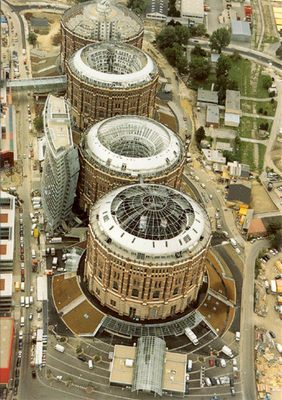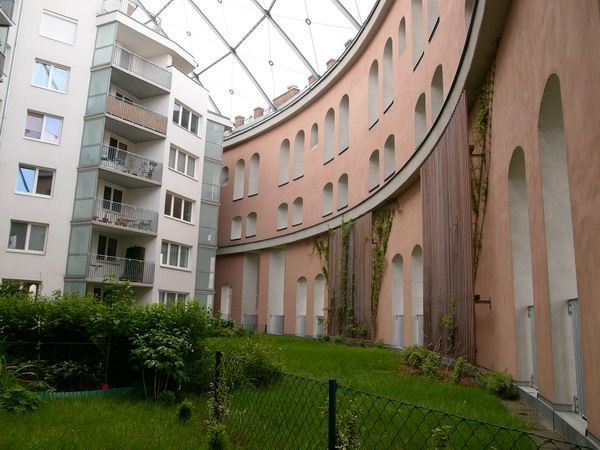About
A gasometer or a gas holder is a large container in which natural gas is stored at atmospheric pressure.
In the 19th and early-20th century, gasometers were used to temporarily store natural gas near towns and city districts, where it could be used by industry and households. The purpose of these installations was to lower the gas pressure from high levels present in pipelines. They also regulated the supply between periods of high and low demand during the day.
An average gasometer is a gigantic structure, capable of storing tens of thousands of cubic meters of gas, with diameters that could reach up to 60m. Due to technological advances, gasometers have been largely replaced by other methods of gas storage, such as giant underground facilities and high pressure pipes.
By the end of the century, many towns and cities in the U.S. and Europe ended up with disused gasometers scattered around their suburbs. While some of these giant objects have been demolished to make way for new urban development projects, some of them have been reclaimed and converted for new purposes.
An excellent example are the former Gaswerk Simmering gasometers in Vienna. This complex of four gasometers was built in a period of three years, between 1896 and 1899, in order to supply gas for Vienna's street lamps. Each of these gargantuan tanks could hold up to 90,000 cubic meters of gas. They remained in use for almost a century, until 1984.
After they were finally retired from gas storage, these ornate red brick structures were deemed too beautiful to be destroyed. Instead they were converted into apartment blocks and commercial space.
Only brick facades and metallic roofs remain of the original construction. The new interior of each gasometer was designed by a different architect, Jean Nouvel (Gasometer A), Coop Himmelblau (Gasometer B), Manfred Wehdorn (Gasometer C), and Wilhelm Holzbauer (Gasometer D). The reconstruction started in 1995 and finished in 2001.
The lower floors of the gasometers are occupied by shopping malls, mid levels are converted into office spaces, and apartments are situated on the top of the structures.
In the years between decommissioning and reconstruction, the four gasometers had a brief stint in the film industry, as a setting of one of the James Bond films and as a venue for raves. These large round structures provided an unusual echo effect popular with ravers of the day.
Related Tags
Community Contributors
Published
February 21, 2010



















































